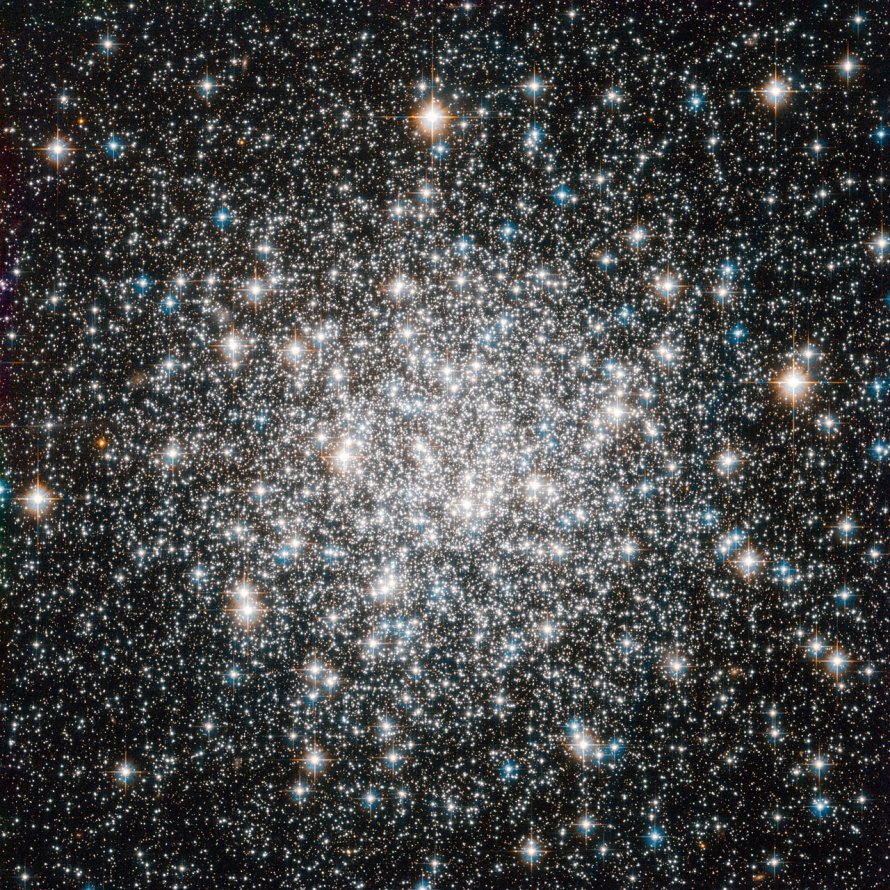M68 (NGC 4590)
Messier 68 (NGC 4590) is a globular cluster located in the constellation Hydra, in the Galactic Center of the Milky Way Galaxy in the Local Group of galaxies. M68 is 33600 light years away from Earth.
M68 is best viewed during late spring, is magnitude 9.7, and can be viewed with small telescope. M68 is 11' in apparent size. For reference, the full moon is 30'.
Observing difficulty: Hard
- Name:
- Type:
- globular cluster
- Constellation:
- Hydra
- NGC or IC:
- NGC 4590
- Magnitude:
- 9.7
- Viewing:
- small telescope
- Size:
- 11'
- Distance (light years):
- 33600 LY
- RA:
- 12h 39.5m
- Dec:
- -26 45'
- Season:
- late spring
- Milky Way location:
- Galactic Center
- Galaxy group:
- Local Group
- Messier Marathon #:
- 66
* The naked eye can see up to magnitude ~7-8 objects under ideal dark sky conditions.
A Globular Cluster in Hydra
Messier 68, also known as NGC 4590, is a globular cluster located in the constellation Hydra. First documented by Charles Messier in 1780, it stands as an important component of the halo of our Milky Way Galaxy. The cluster resides approximately 33,000 light-years from the solar system and some 36,000 light-years away from the Galactic Centre.
Characteristics of M68
Messier 68 comprises around 100,000 stars within its 106-light-year diameter. The total luminosity of M68 is roughly 63,000 times that of the Sun, and its spectral classification is F4, meaning that its combined light appears slightly yellowish-white when seen from Earth. M68 contains a considerable number of RR Lyrae variable stars, typically used as standard candles for determining astronomical distances due to their consistent luminosity.
Given its position in the outer halo of the Milky Way, M68 is considered an "outer" globular cluster. Its stars are generally metal-poor, as is typical for outer globulars. Its relatively high concentration class (II on the Shapley?Sawyer Concentration Class scale from I to XII) implies that the cluster's core is densely packed with stars.
Magnitude and Size
Messier 68 has an apparent magnitude of 7.8, making it invisible to the naked eye but relatively easy to observe with small to medium telescopes or binoculars under dark skies. Its angular diameter is about 12 arc minutes, corresponding to a spatial diameter of 106 light-years.
Finding and Viewing M68
Finding M68 requires locating the constellation Hydra, which is best viewed in spring. The cluster is about 3.5 degrees west-northwest of the star ? Hydrae (Eta Hydrae), located in the tail of Hydra. From a dark location, M68 will appear as a fuzzy star through binoculars. With a 4-inch telescope, the cluster begins to resolve into individual stars, while larger telescopes provide an impressive view of this globular cluster.
Overall, with its dense core and multitude of stars, Messier 68 provides a breathtaking view for both amateur and professional astronomers. Its location in the outer reaches of our galaxy gives us a unique perspective on the halo structure of the Milky Way, and the presence of numerous variable stars makes it a fascinating object for study.



